Abstract
Various aspects of agglutination of human erythrocytes by fusobacterium nucleatum were examined. Titration experiments done in buffered saline at pH 6 to 10 showed the same agglutination endpoint. The presence of high concentrations of NaCl in reaction mixtures did not alter titers, but KCl in concentrations of 0.5 to 3.6 M increased titers twofold. The agglutinin was inactivated by heat, acid, alkali, 5% Formalin, and the proteolytic enzyme subtilopeptidase A and therefore appeared to be a protein. Treatment of bacterial cells with 2-mercaptoethanol had no effect. Hemagglutination inhibition experiments revealed that arginine and other compounds containing a guanido group as part of their structure were inhibitory at low concentrations. Various hexoses, some hexose derivatives, and most common metal ions, when added to bacterium-erythrocyte mixtures, had no effect. The binding of dansyl-L-arginine to bacteria, but not erythrocytes, was demonstrable by ultraviolet fluorescence microscopy.
Full text
PDF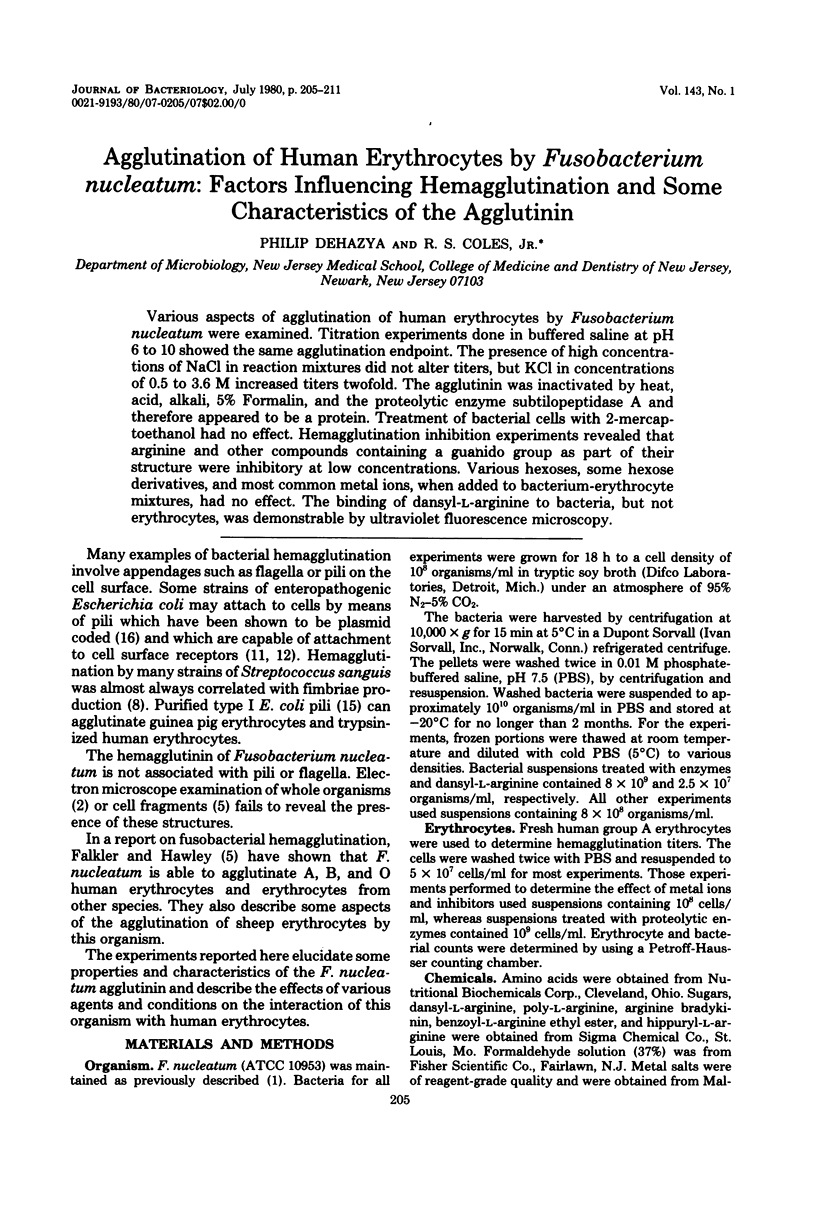
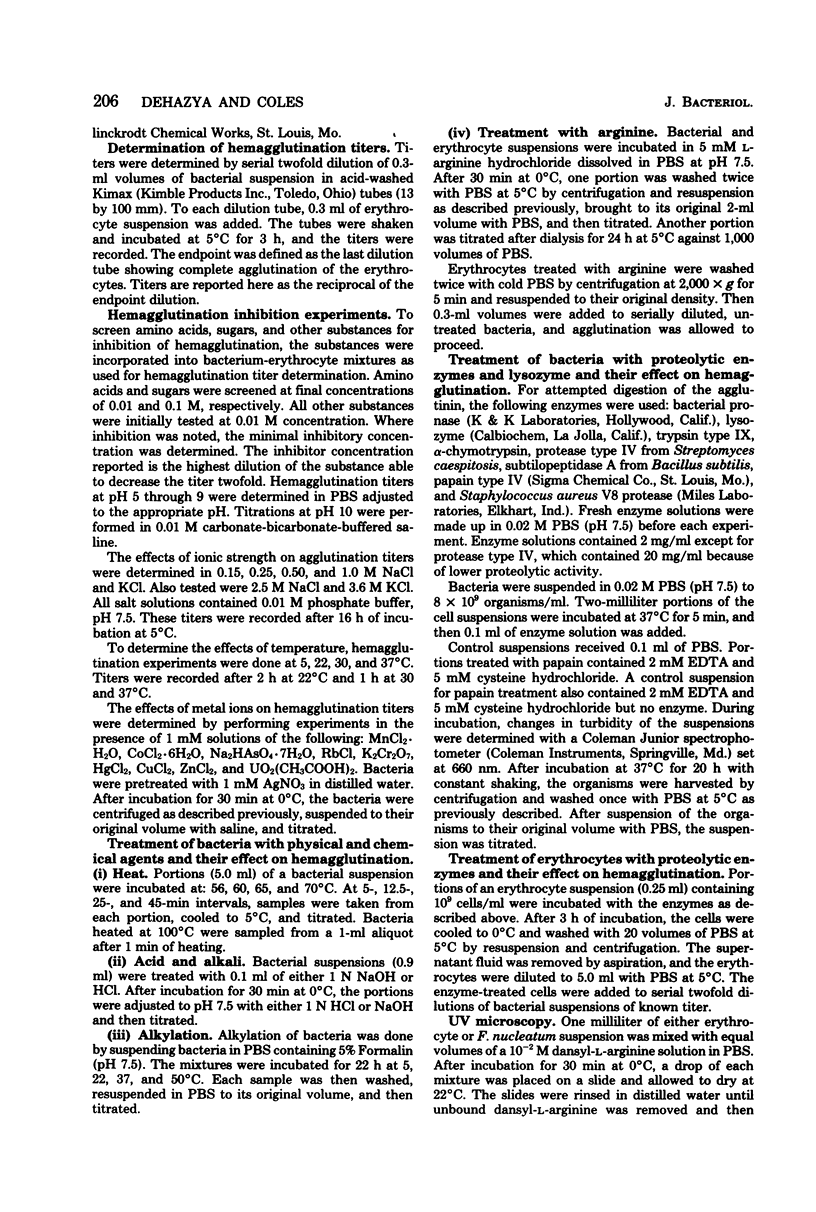
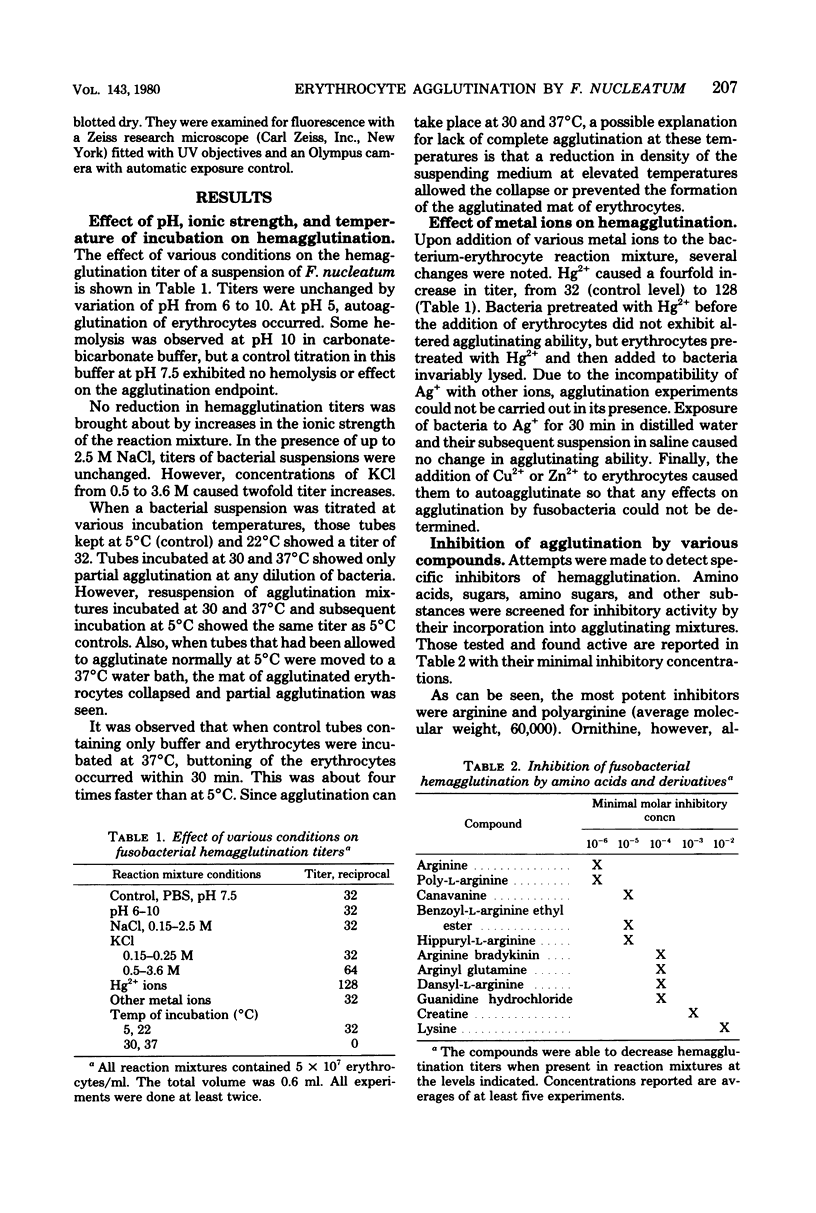
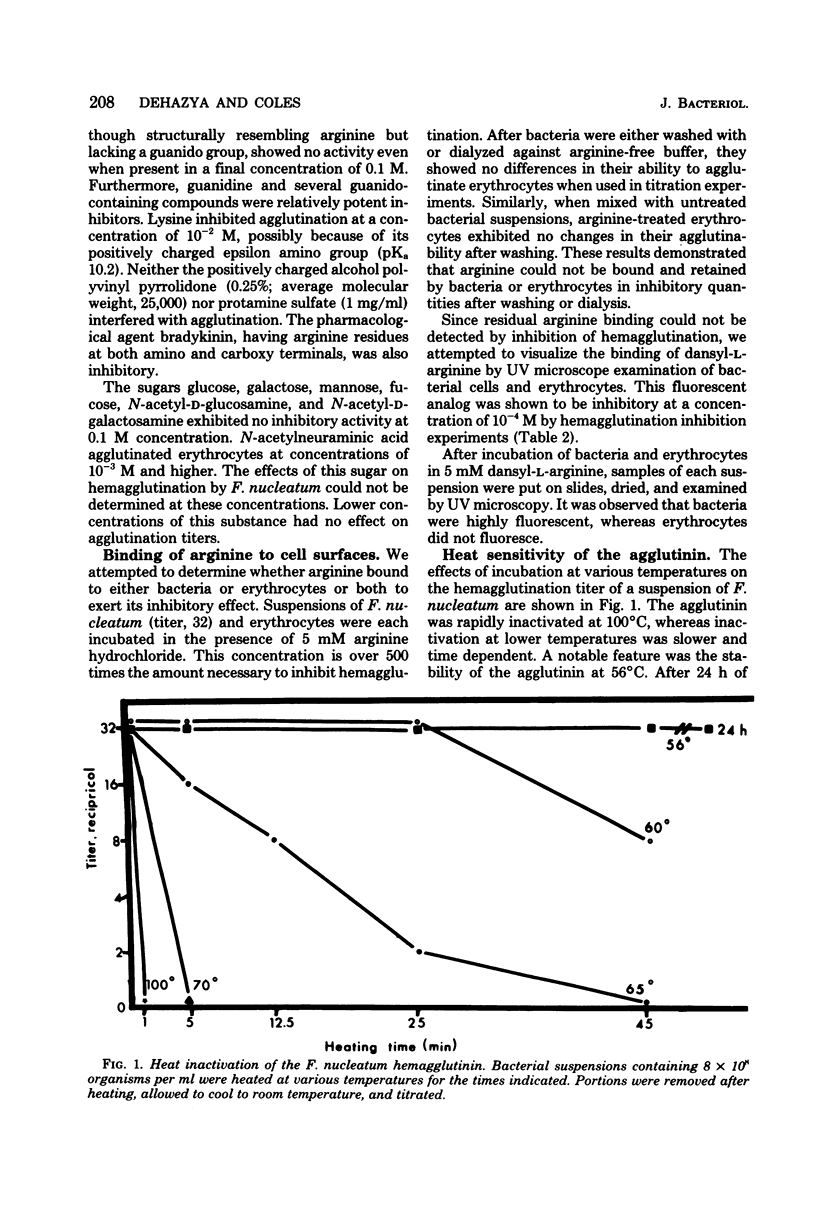
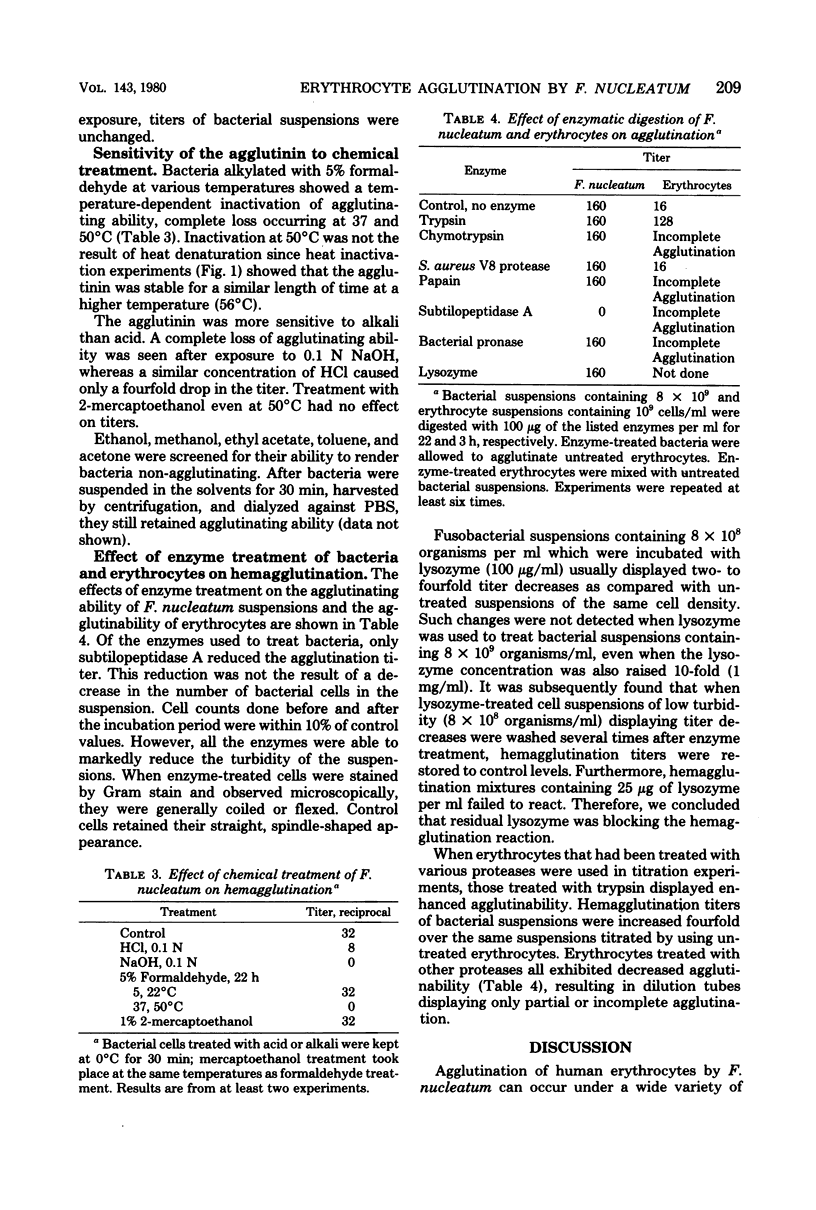
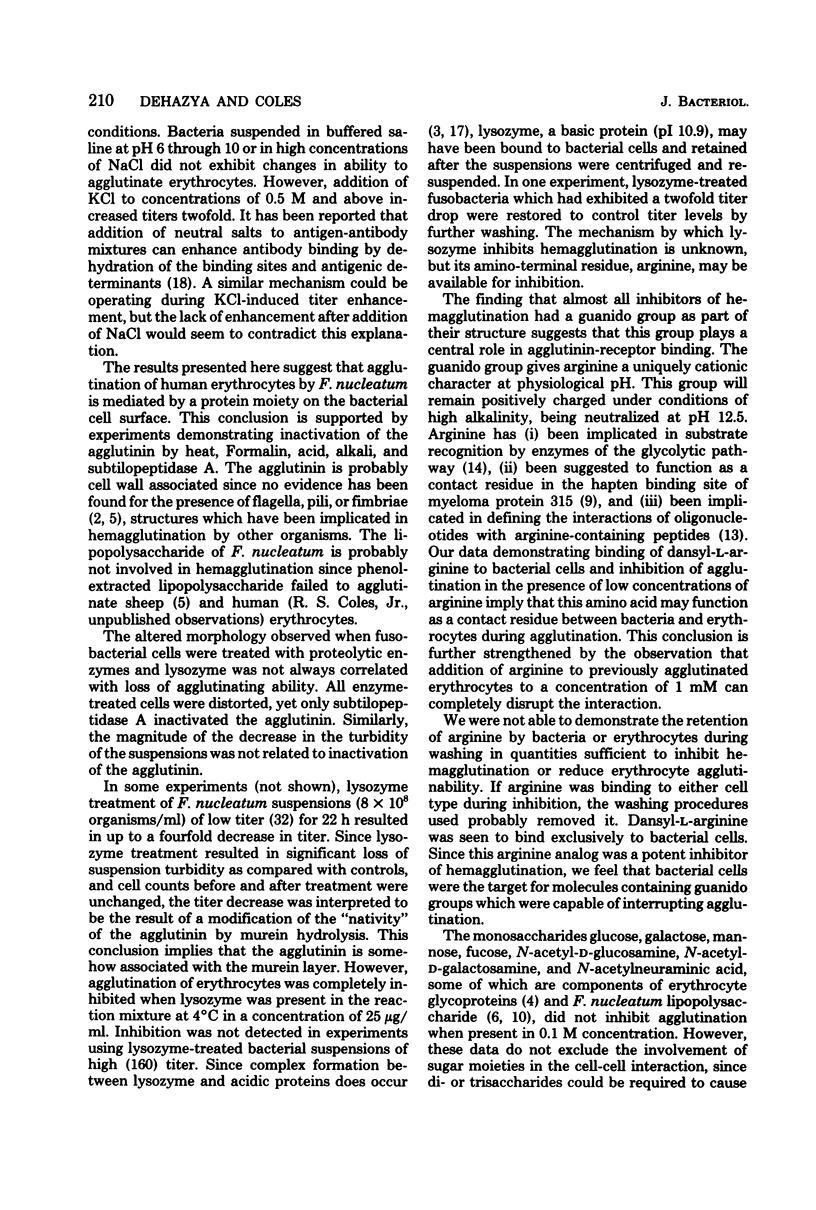
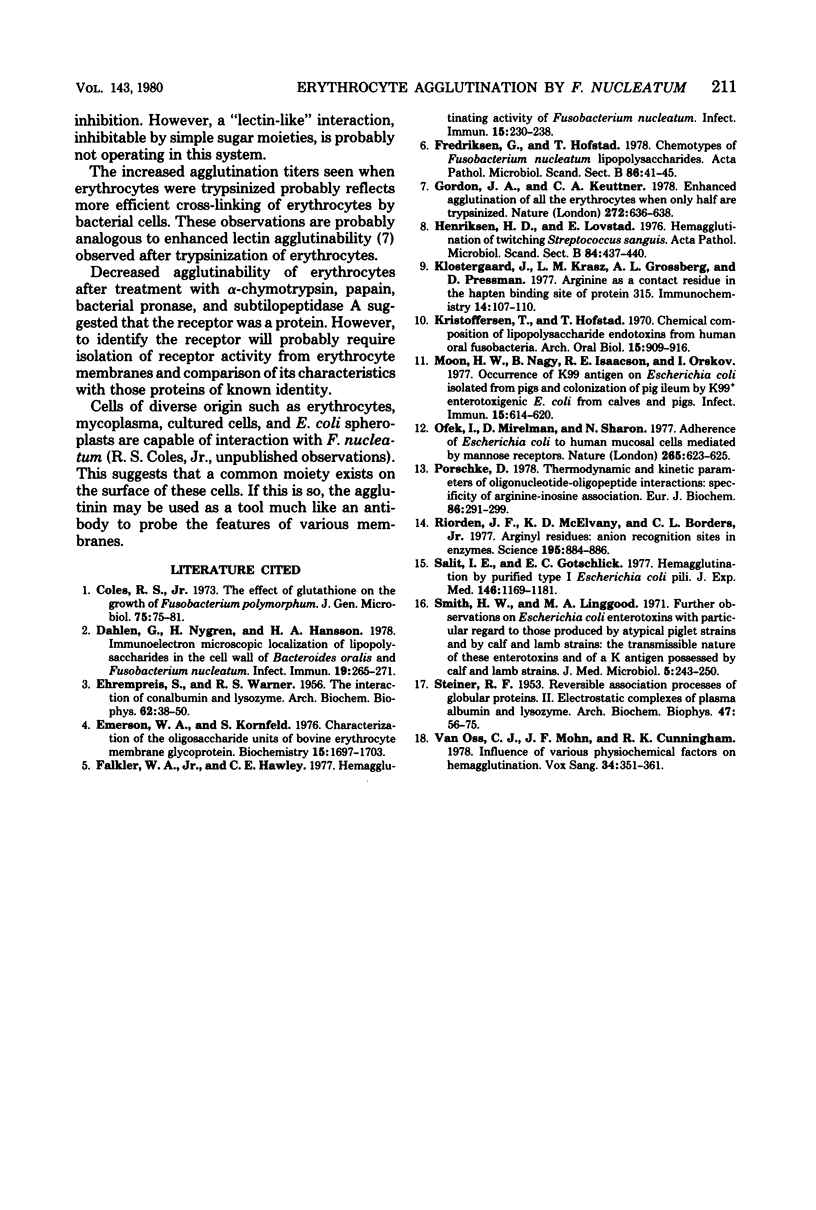
Selected References
These references are in PubMed. This may not be the complete list of references from this article.
- Coles R. S., Jr The effect of glutathione on the growth of Fusobacterium polymorphum. J Gen Microbiol. 1973 Mar;75(1):75–81. doi: 10.1099/00221287-75-1-75. [DOI] [PubMed] [Google Scholar]
- Dahlén G., Nygren H., Hannsson H. A. Immunoelectron microscopic localization of lipopolysaccharides in the cell wall of Bacteroides oralis and Fusobacterium nucleatum. Infect Immun. 1978 Jan;19(1):265–271. doi: 10.1128/iai.19.1.265-271.1978. [DOI] [PMC free article] [PubMed] [Google Scholar]
- EHRENPREIS S., WARNER R. C. The interaction of conalbumin and lysozyme. Arch Biochem Biophys. 1956 Mar;61(1):38–50. doi: 10.1016/0003-9861(56)90315-0. [DOI] [PubMed] [Google Scholar]
- Emerson W. A., Kornfeld S. Characterization of the oligosaccharide units of the bovine erythrocyte membrane glycoprotein. Biochemistry. 1976 Apr 20;15(8):1697–1703. doi: 10.1021/bi00653a017. [DOI] [PubMed] [Google Scholar]
- Falkler W. A., Jr, Hawley C. E. Hemagglutinating activity of Fusobacterium nucleatum. Infect Immun. 1977 Jan;15(1):230–238. doi: 10.1128/iai.15.1.230-238.1977. [DOI] [PMC free article] [PubMed] [Google Scholar]
- Fredriksen G., Hofstad T. Chemotypes of Fusobacterium nucleatum lipopolysaccharides. Acta Pathol Microbiol Scand B. 1978 Feb;86(1):41–45. doi: 10.1111/j.1699-0463.1978.tb00006.x. [DOI] [PubMed] [Google Scholar]
- Gordon J. A., Kuettner C. A. Enhanced agglutination of all the erythrocytes when only half are trypsinised. Nature. 1978 Apr 13;272(5654):636–638. doi: 10.1038/272636a0. [DOI] [PubMed] [Google Scholar]
- Henriksen S. D., Løvstad E. Haemagglutination of twitching Streptococcus sanguis. Acta Pathol Microbiol Scand B. 1976 Dec;84B(6):437–440. doi: 10.1111/j.1699-0463.1976.tb01964.x. [DOI] [PubMed] [Google Scholar]
- Klostergaard J., Krausz L. M., Grossberg A. L., Pressman D. Arginine as a contact residue in the hapten-binding site of protein 315. Immunochemistry. 1977 Feb;14(2):107–110. doi: 10.1016/0019-2791(77)90288-9. [DOI] [PubMed] [Google Scholar]
- Kristoffersen T., Hofstad T. Chemical composition of lipopolysaccharide endotoxins from human oral fusobacteria. Arch Oral Biol. 1970 Oct;15(10):909–916. doi: 10.1016/0003-9969(70)90087-7. [DOI] [PubMed] [Google Scholar]
- Moon H. W., Nagy B., Isaacson R. E., Orskov I. Occurrence of K99 antigen on Escherichia coli isolated from pigs and colonization of pig ileum by K99+ enterotoxigenic E. coli from calves and pigs. Infect Immun. 1977 Feb;15(2):614–620. doi: 10.1128/iai.15.2.614-620.1977. [DOI] [PMC free article] [PubMed] [Google Scholar]
- Ofek I., Mirelman D., Sharon N. Adherence of Escherichia coli to human mucosal cells mediated by mannose receptors. Nature. 1977 Feb 17;265(5595):623–625. doi: 10.1038/265623a0. [DOI] [PubMed] [Google Scholar]
- Pörschke D. Thermodynamic and kinetic parameters of oligonucleotide--oligopeptide interactions. Specificity of arginine . inosine association. Eur J Biochem. 1978 May;86(1):291–299. doi: 10.1111/j.1432-1033.1978.tb12310.x. [DOI] [PubMed] [Google Scholar]
- Riordan J. F., McElvany K. D., Borders C. L., Jr Arginyl residues: anion recognition sites in enzymes. Science. 1977 Mar 4;195(4281):884–886. doi: 10.1126/science.190679. [DOI] [PubMed] [Google Scholar]
- STEINER R. F. Reversible association processes of globular proteins. II. Electrostatic complexes of plasma albumin and lysozyme. Arch Biochem Biophys. 1953 Nov;47(1):56–75. doi: 10.1016/0003-9861(53)90437-8. [DOI] [PubMed] [Google Scholar]
- Salit I. E., Gotschlich E. C. Hemagglutination by purified type I Escherichia coli pili. J Exp Med. 1977 Nov 1;146(5):1169–1181. doi: 10.1084/jem.146.5.1169. [DOI] [PMC free article] [PubMed] [Google Scholar]
- Smith H. W., Linggood M. A. Further observations on Escherichia coli enterotoxins with particular regard to those produced by atypical piglet strains and by calf and lamb strains: the transmissible nature of these enterotoxins and of a K antigen possessed by calf and lamb strains. J Med Microbiol. 1972 May;5(2):243–250. doi: 10.1099/00222615-5-2-243. [DOI] [PubMed] [Google Scholar]
- van Oss C. J., Mohn J. F., Cunningham R. K. Influence of various physicochemical factors on hemagglutination. Vox Sang. 1978;34(6):351–361. doi: 10.1111/j.1423-0410.1978.tb02890.x. [DOI] [PubMed] [Google Scholar]


